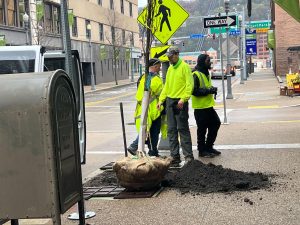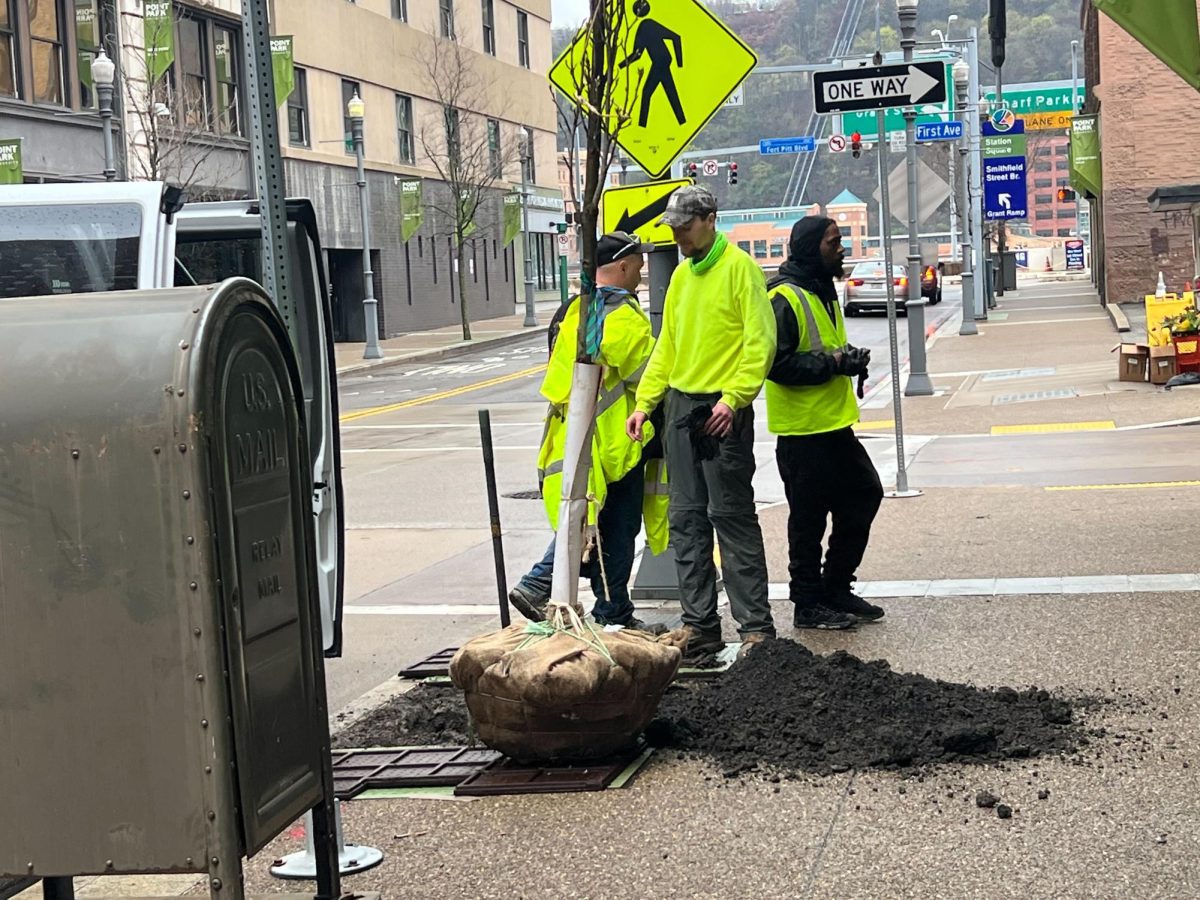Like whitetail deer and red oak trees, Marcellus Shale pipelines and gas wells have become another part of the landscape in rural Pennsylvania. Yet most people never see it for themselves, nor can they fully grasp how the multi-billion-dollar gas industry affects communities and individuals, according to Laura Domencic, curator of the Marcellus Shale Documentary Project.“The whole purpose and reason for doing this was to try to shed some light on how this is impacting people’s lives on a day-to-day basis and what that could mean for this region,” Domencic said. “It wasn’t meant to pass any judgment, but more so open up the conversation to get past the sound bites and really controversial shouting matches.”The documentary project, which runs until Jan. 6, 2013, at Pittsburgh Filmmakers Galleries, exhibits photographs from six photographers and photojournalists who captured images of drilling rigs, transformed landscapes and people whose lives have been changed by Marcellus Shale. On Thursday, Oct. 25, a free public forum and artist talk will be held in the Melwood Screening Room from 6 p.m. to 8 p.m.The project got its start about two years ago when Brian Cohen, a Pittsburgh-based photographer and adjunct professor at Point Park, proposed the idea to Domencic, director of Pittsburgh Center for the Arts.They began contacting other photographers already documenting the impact of Marcellus Shale and compiled over 150 images for the online archive and 60 for the exhibition.Martha Rial, a Pittsburgh-based photojournalist, documented the impact of Marcellus Shale for freelance assignments before joining the project. While photographing drilling locations in Washington, Greene and Lycoming counties, she realized the amorphous and complex nature of the Marcellus Shale question.“What’s happening is underground, and you just don’t really see it. You see a lot of very impressive, huge, noisy equipment. You see the lights. Sometimes you can smell it,” Rial said. “It was mind-boggling to me the first time I saw how huge it is and disruptive, but I still feel like I barely know anything about it.”Part of the documentary project’s goal is to make the issue more visible to those who are not directly affected. One way of doing this is to share the stories of those hit the hardest by Marcellus Shale. Two of those people are Janet and Fred McIntyre, a couple who lives near a Rex Energy gas-drilling site in Evans City, Butler County. Cohen documented their story and discovered their water, which had been fine to drink for 20 years, became contaminated shortly after the drilling began.They also grew ill. Fred McIntyre lost nearly 30 pounds, and both of the McIntyres started getting skin rashes, headaches, nosebleeds and other ailments. Cohen photographed Janet McIntyre’s trip to the doctor to check if she was still in remission for leukemia.Cohen said he had to be careful with what he claimed in his photos. It is difficult to prove that Marcellus Shale drilling is the only factor that caused the McIntyres’ poor health, but he also started to see patterns emerge that indicated this was a common phenomenon for families who live near drilling sites.The most important thing, Cohen said, is to tell the stories of these individuals who are suffering in some way, regardless of the cause.“They’re not asking for pity, and they’re not asking for anything except for people to understand what has been going on in their situation, and I think they are incredibly strong and dignified,” Cohen said.The story is not an easy one to tell, however. It requires a great deal of compassion and sensitivity, but also a clear head and some degree of detachment from the usual pro-drilling or anti-fracking rhetoric. Because it is such a controversial topic, almost everyone who follows the news has an opinion on whether “fracking,” the hydraulic fracturing method of extracting gas from the earth, is environmentally safe.Yet the goal of the documentary project is to take a step back from this discourse and instead analyze the human and environmental impact of Marcellus Shale in a way that is relatable.“The idea is not to put horns on the heads of the industry and make them out to be some terrible evil, but rather to be a little more dispassionate and offer people a view into this world that most of us would not ordinarily have,” Cohen said.Rial photographed both industry workers and families who have been affected by Marcellus Shale, so it was a challenge to balance both sides of the story in her documentation.“As a journalist and a photographer, I do my best to listen to everybody, to take everybody’s thoughts into consideration, but it’s difficult,” Rial said. “Had it been my land, I don’t think I would have been so thrilled, but then again, you really never know until you walk a mile in their shoes.”Regardless of one’s point of view, Cohen said this project brings to light the ongoing industry activities that are less than 30 miles away from Pittsburgh. “Part of the value of a project like this is it helps people understand that it is actually in their backyards and it does affect all of us,” Cohen said. “And that, I hope, would enable people to be better informed and to start having these conversations.”
April 19‘Burgh Bites: Subway












